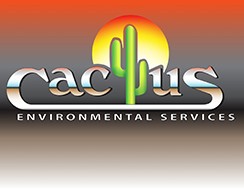
Sand & Grit Traps: What You Need to Know
If you own or maintain a car wash, all the dirt that you wash off cars and trucks gets captured in grit traps or car wash bay traps. Car wash maintenance involves hiring legally registered transporters to pump, transport, and dispose of the sludge waste these grit traps filter out.
Grit Traps and the Law
Local plumbing code and waste water utilities regulate grit traps, but the TCEQ (Texas Commission on Environmental Quality) regulates sludge waste pumping, treatment, transportation, and disposal. If grit traps are not pumped regularly, overflowing car wash traps can pass along grit and clog city sewer mains, which cost tens of thousands of dollars to fix. Automotive fluids can also contaminate grit-trap waste with benzene, lead, and oils, so companies that generate semi-liquid waste must make sure it is handled and disposed of safely. Only transporters registered with the TCEQ can legally pump and transport wet grit-trap waste.Grit Trap Cleaning & Disposal
Choose your waste disposal company carefully; you’ll be held responsible for how your waste is transported and disposed of. If city sewer mains get clogged, you’ll also need a company that keeps good records. These records can prove to the city that you didn’t cause the clog, because you have your traps pumped regularly.How a Grit Trap Works
Grit traps use two chambers, one primary and one secondary, to separate oily petrochemicals and solid wastes (dirt, sands, and solids) from water. The waste water from a car wash is collected in the primary separation chamber, and the oily petrochemicals rise to the top, while solids sink to the bottom. A crossover pipe is fixed in the middle of the chamber wall, below the oily petrochemical film and above the solid grit. Cleaned water flows through the crossover pipe to the second chamber, where gravity separates any remaining grit and oils from the water. This water flows out of the secondary chamber through an outlet pipe in the middle of the chamber wall to the sewer system.When to Have Your Grit Trap Cleaning Done
While a restaurant’s grease traps need to be pumped out and cleaned once every 30-90 days, depending on local regulations, many Texas municipalities only require grit trap cleaning once a year. Check your local regulations, just to be safe. You’ll also need a legally registered transporter to clean your grit trap when the crossover pipe or the outlet pipe get clogged. At Cactus Environmental we specialize in grit trap cleaning and maintenance and can help keep your business compliant. Call us at 1-214-252-5000 to clean your grit traps when any of these things happen:-
- Water is much higher in the primary chamber and normal in the secondary chamber (clogged crossover pipe).
- Water overflows your primary chamber lid (clogged crossover pipe).
- Water overflows both the primary and secondary chamber lids (clogged outgoing pipe).
- Both chambers are full of oil and grit (grit trap is full; pipes may also clog).
Disclaimer: Cactus strives to provide top-tier service for all industrial and commercial markets. For individuals needing residential services, please contact your city's Household Hazardous Waste Division.
